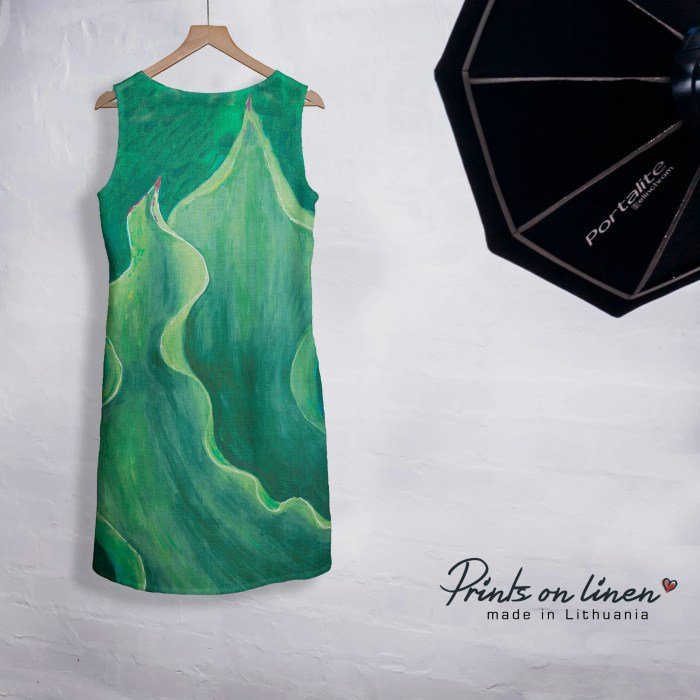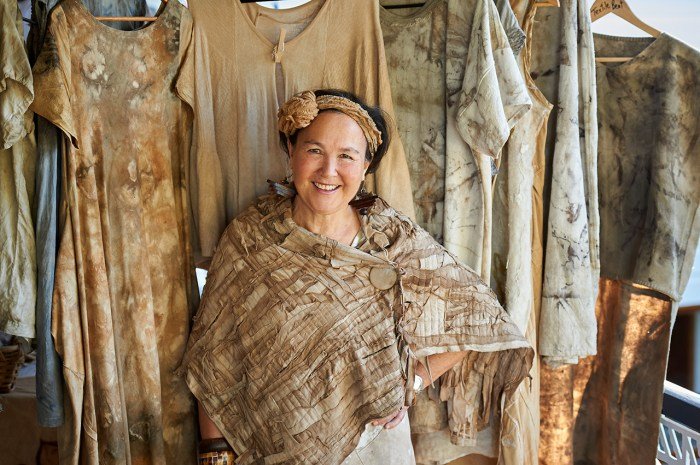Wabi sabi dresses have emerged as a captivating fusion of Japanese aesthetics and contemporary fashion, inviting us to embrace the beauty of imperfection and find elegance in the natural world.
These dresses embody the principles of wabi sabi, a Japanese philosophy that celebrates the beauty of impermanence, asymmetry, and the passage of time.
Wabi Sabi Fashion
Originating in Japanese aesthetics, “Wabi Sabi” encapsulates a profound philosophy that embraces the beauty of imperfection, impermanence, and simplicity. Rooted in Zen Buddhism, Wabi Sabi teaches us to appreciate the transient nature of all things, finding solace in the flaws and imperfections that make life unique and meaningful.
Wabi sabi dresses are an elegant and understated choice for any occasion, including fall weddings. If you’re looking for a unique and stylish way to dress your bridesmaids, consider fall wedding bridesmaid dresses purple. These dresses are perfect for a rustic or bohemian wedding, and they’re sure to make your bridesmaids look and feel their best.
Wabi sabi dresses are typically made from natural materials, such as linen or cotton, and they often feature simple, flowing designs. They’re perfect for creating a relaxed and elegant atmosphere.
Wabi Sabi Principles in Fashion Design
In fashion design, Wabi Sabi principles manifest in garments that celebrate asymmetry, irregularity, and patina. Designers incorporate natural materials such as linen, silk, and cotton, allowing the fabrics to age gracefully and develop a unique character over time. Garments often feature unfinished edges, visible mending, and subtle imperfections that highlight the handmade and artisanal nature of the pieces.
Wabi sabi dresses embody the beauty of imperfection, embracing the natural and unadorned. For a special occasion, consider first communion dresses from italy , which blend traditional elegance with a touch of wabi sabi. The intricate embroidery and flowing fabrics evoke a sense of timelessness, while the subtle imperfections add a touch of authenticity.
Whether it’s for a religious ceremony or a special gathering, wabi sabi dresses offer a unique and meaningful choice.
Wabi Sabi Design Elements in Dresses
- Asymmetry:Dresses may feature uneven hemlines, off-center necklines, or asymmetrical draping, creating a sense of movement and dynamism.
- Irregularity:Fabrics may be wrinkled, textured, or have irregular patterns, embracing the natural imperfections of the materials.
- Patina:Dresses may be designed to develop a patina over time, with fading colors and subtle wear patterns adding to their unique charm.
Characteristics of Wabi Sabi Dresses

Wabi Sabi dresses embody the Japanese aesthetic philosophy of embracing imperfections and finding beauty in the ordinary. These dresses are characterized by their natural materials, earthy color palettes, imperfect shapes, and visible mending or repairs.
Wabi sabi dresses embody a unique aesthetic that celebrates the beauty of imperfection. If you’re looking for something more structured, consider exploring thierry colson dresses , known for their elegant silhouettes and sophisticated designs. While different in style, both wabi sabi and thierry colson dresses share a common thread of artistry and attention to detail.
Natural Materials
Wabi Sabi dresses are typically made from natural materials such as linen, cotton, and silk. These materials are breathable, comfortable to wear, and have a unique texture that adds to the dress’s overall aesthetic.
Earthy and Muted Color Palettes
The color palettes of Wabi Sabi dresses are typically earthy and muted. These colors, such as brown, beige, green, and gray, reflect the natural world and create a sense of tranquility.
Wabi sabi dresses exude an understated elegance that embraces the beauty of imperfection. Their simple, flowy designs evoke a sense of serenity and timelessness. If you seek a touch of glamour, explore the devotion ella dresses collection. These dresses combine the effortless charm of wabi sabi with intricate details and luxurious fabrics.
Whether for a casual outing or a special occasion, wabi sabi dresses offer a versatile and stylish choice.
Imperfect and Asymmetrical Shapes
Wabi Sabi dresses often have imperfect and asymmetrical shapes. This is because the philosophy of Wabi Sabi embraces the beauty of imperfections. The irregular shapes of these dresses add to their unique and charming aesthetic.
Visible Mending or Repairs
Visible mending or repairs are often a feature of Wabi Sabi dresses. This is because the philosophy of Wabi Sabi values the repair and reuse of objects. Visible mending adds to the dress’s character and tells a story of its journey.
Styling Wabi Sabi Dresses
Wabi sabi dresses are versatile and can be styled in various ways to suit different occasions. Here are some tips for styling wabi sabi dresses:
Pair with Simple Accessories and Footwear, Wabi sabi dresses
Wabi sabi dresses are often best paired with simple accessories and footwear. This allows the dress to take center stage and creates a more understated look. Some good options for accessories include wooden or beaded jewelry, and for footwear, sandals or flats are a good choice.
Layer with Other Natural Fabrics
Wabi sabi dresses can also be layered with other natural fabrics, such as linen, cotton, or silk. This can create a more textured and interesting look. When layering, be sure to choose fabrics that complement the color and style of your dress.
Incorporate Elements of Nature
Wabi sabi dresses can also be styled with elements of nature, such as plants or flowers. This can help to create a more organic and earthy look. Some good ways to incorporate elements of nature into your outfit include wearing a flower crown, adding a few sprigs of greenery to your hair, or carrying a bouquet of flowers.
Wabi Sabi Dresses for Different Occasions
Wabi Sabi dresses can be effortlessly adapted to suit various occasions, from casual outings to formal events and professional settings. Their inherent versatility and timeless elegance make them a perfect choice for expressing individuality and style.
When selecting a Wabi Sabi dress for a specific occasion, consider the overall ambiance, dress code, and desired level of formality. Here are some guidelines for adapting Wabi Sabi dresses for different settings:
Casual Outings
For casual outings, such as brunches, picnics, or shopping, opt for Wabi Sabi dresses in soft, flowy fabrics like linen, cotton, or silk. Choose dresses with relaxed silhouettes, such as A-line or empire waists, that allow for ease of movement and comfort.
Pair them with sandals or flats for a laid-back and effortless look.
Formal Events
For formal events, such as weddings, galas, or black-tie affairs, Wabi Sabi dresses can be elevated with luxurious fabrics like silk, velvet, or lace. Opt for dresses with more structured silhouettes, such as fit-and-flare or mermaid styles, to create a sophisticated and elegant look.
Accessorize with statement jewelry, heels, and a clutch to complete the ensemble.
Work or Professional Settings
For work or professional settings, Wabi Sabi dresses can be tailored to exude both style and professionalism. Choose dresses in neutral colors like black, white, or beige, and opt for fabrics with a subtle sheen or texture, such as crepe or satin.
Select dresses with clean lines and modest necklines, and pair them with tailored jackets, blazers, or cardigans for a polished and work-appropriate look.
Brands and Designers of Wabi Sabi Dresses
Wabi Sabi dresses have gained popularity in recent years, with many brands and designers embracing the style. These designers create unique and elegant pieces that embody the principles of Wabi Sabi.
Notable Brands and Designers
Some notable brands and designers known for their Wabi Sabi dresses include:
- Issey Miyake: Known for his innovative designs and use of natural materials, Issey Miyake’s Wabi Sabi dresses often feature asymmetrical cuts, draped fabrics, and earthy tones.
- Yohji Yamamoto: Yamamoto’s designs are characterized by their avant-garde aesthetic and emphasis on black. His Wabi Sabi dresses often feature deconstructed silhouettes, raw edges, and unconventional fabrics.
- Junya Watanabe: Watanabe’s designs are known for their playful and experimental nature. His Wabi Sabi dresses often incorporate unexpected elements, such as patchwork, frayed edges, and unfinished seams.
- Comme des Garçons: Known for their avant-garde and conceptual designs, Comme des Garçons’ Wabi Sabi dresses often challenge traditional notions of beauty and fashion.
- Haider Ackermann: Ackermann’s designs are known for their elegant and sophisticated aesthetic. His Wabi Sabi dresses often feature fluid fabrics, draped silhouettes, and subtle details.
These brands and designers offer a diverse range of Wabi Sabi dresses, catering to different tastes and preferences. From the minimalist designs of Issey Miyake to the avant-garde creations of Comme des Garçons, there is a Wabi Sabi dress for every fashion-forward individual.
Conclusion

Whether adorning them for casual outings or formal events, wabi sabi dresses offer a unique and timeless style that transcends trends, allowing us to appreciate the beauty that lies within the imperfections of life.
Question & Answer Hub: Wabi Sabi Dresses
What are the key characteristics of wabi sabi dresses?
Wabi sabi dresses are typically made from natural materials like linen, cotton, or silk, and feature earthy and muted color palettes. They often have imperfect and asymmetrical shapes, and may incorporate visible mending or repairs.
How can I style wabi sabi dresses?
Wabi sabi dresses can be styled with simple accessories and footwear, and layered with other natural fabrics. Incorporating elements of nature, such as plants or flowers, can further enhance their unique aesthetic.